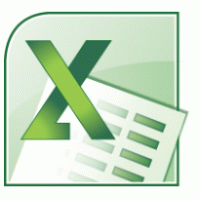 Back to jkp-ads.com |
Ron de Bruin
|
|
 Back to jkp-ads.com |
Ron de Bruin
|
|
Ron de Bruin decided to remove all Windows Excel content from his website for personal reasons. If you want to know why, head over to rondebruin.nl.
Luckily, Ron was kind enough to allow me to publish all of his Excel content here.
Most of these pages are slightly outdated and may contain links that don 't work. Please inform me if you find such an error and I'll try to fix it.
Kind regards
Jan Karel Pieterse
This macro will add a worksheet to your workbook with the name "Summary-Sheet". It will use one row on that summary sheet for every visible worksheet in your workbook. For each cell (4) in the example Range "A1,D5:E5,Z10" it will add a link on that row, starting in column "B" because It will copy the sheet name in column "A". You see that you can use a range with more the one area if you want in my example. If you want to summary a lot of data I suggest that you use the code in this article : Merge cells from all or some worksheets into one Master sheet
Note: Each time you run the code it will delete the summary sheet first and add a new one to recreate the links so your formula links are up to date. Be aware that the total of columns in Excel (Excel 97-2003 = 256 and in Excel 2007-2013 = 16384) is the limit of cells that you can use in the range in this example.
Copy the code in a Standard module of your workbook, if you just
started with VBA see this page.
Where do I paste
the code that I find on the internet
Sub Summary_All_Worksheets_With_Formulas()
Dim Sh As Worksheet
Dim Newsh As Worksheet
Dim myCell As Range
Dim ColNum As Integer
Dim RwNum As Long
Dim Basebook As Workbook
With Application
.Calculation = xlCalculationManual
.ScreenUpdating = False
End With
'Delete the sheet "Summary-Sheet" if it exist
Application.DisplayAlerts = False
On Error Resume Next
ThisWorkbook.Worksheets("Summary-Sheet").Delete
On Error GoTo 0
Application.DisplayAlerts = True
'Add a worksheet with the name "Summary-Sheet"
Set Basebook = ThisWorkbook
Set Newsh = Basebook.Worksheets.Add
Newsh.Name = "Summary-Sheet"
'The links to the first sheet will start in row 2
RwNum = 1
For Each Sh In Basebook.Worksheets
If Sh.Name <> Newsh.Name And Sh.Visible Then
ColNum = 1
RwNum = RwNum + 1
'Copy the sheet name in the A column
Newsh.Cells(RwNum, 1).Value = Sh.Name
For Each myCell In Sh.Range("A1,D5:E5,Z10") '<--Change the range
ColNum = ColNum + 1
Newsh.Cells(RwNum, ColNum).Formula = _
"='" & Sh.Name & "'!" & myCell.Address(False, False)
Next myCell
End If
Next Sh
Newsh.UsedRange.Columns.AutoFit
With Application
.Calculation = xlCalculationAutomatic
.ScreenUpdating = True
End With
End Sub
Add header above your data
If you want to add headers in the first row you can use this code line
after you add/named Newsh
'Add headers
Newsh.Range("B1:E1").Value = Array("header1", "header2", "header3",
"header4")
You see that there are four cells in the range and
four words in the array. Be sure that both have the same number of cells if
you add more headers.
Use a Hyperlink to the sheet in
column A instead of the sheet name
Replace
'Copy the sheet name in the A column
Newsh.Cells(RwNum, 1).Value = Sh.Name
With
'Create a link to the sheet in the A column
Newsh.Hyperlinks.Add Anchor:=Newsh.Cells(RwNum, 1), Address:="", _
SubAddress:="'" & Sh.Name & "'!A1", TextToDisplay:=Sh.Name
Or: If you want to use the the Hyperlink worksheet function use this this tip
'Create a link to the sheet in the A column
Newsh.Cells(RwNum, 1).Formula _
= "=HYPERLINK(""#""&CELL(""address"",'" & Sh.Name & "'!A1)," _
& """" & Sh.Name & """)"
Use a existing worksheet
Another way is to use a existing worksheet in your workbook and clear the old content in the code each time you run the code. Note: I not clear row 1 in this example (maybe your header row)
'Delete the sheet "Summary-Sheet" if it exist Application.DisplayAlerts = False On Error Resume Next ThisWorkbook.Worksheets("Summary-Sheet").Delete On Error GoTo 0 Application.DisplayAlerts = True 'Add a worksheet with the name "Summary-Sheet" Set Basebook = ThisWorkbook Set Newsh = Basebook.Worksheets.Add Newsh.Name = "Summary-Sheet"
With this (change "YourSheet" to your worksheet name)
Set Basebook = ThisWorkbook
Set Newsh = Basebook.Worksheets("YourSheet")
Newsh.Rows("2:" & Newsh.Rows.Count).Clear